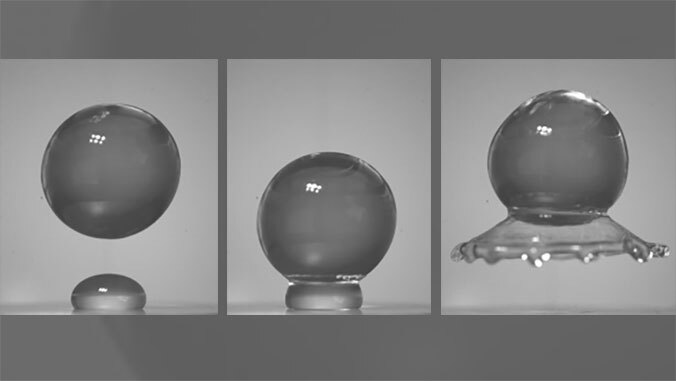
There may be a more efficient future for water repellent materials and methods thanks to new research from the University of Hawaiʻi at Mānoa College of Engineering. Associate Professor John S. Allen III and an international team of researchers have discovered a method to remove liquid from non-stick surfaces using hydrogel beads, a material similar to gel cap medications.
“Ever want to remove a puddle completely without touching it? How about removing staining coffee off your clothes? Know that all the dangerous contaminants are off a surface? All these might be facilitated with low cost hydrogel beads in the future,” Allen explained.
For a variety of everyday and industrial waterproof/water resistant objects, it is important to reduce the contact time of an impacting water or liquid drop with the surface. Many people are familiar with water repellent coating on buildings and on clothing. Repellants are also used to mitigate icing on a plane, as bouncing droplets are less likely to have time to freeze.
One way to achieve this has been to use hydrophobic (water repellant) coatings. In nature, many plant leaves, such as lotus leaves, naturally repel water. Other methods include texturing the surface with microscopic features or applying a lubricant. In contrast to these passive methods, active methods include the application of vibrations and electric fields. However, it is typically difficult to determine or measure their effectiveness.
Allen’s research introduces an active method in which hydrogel beads are able to remove residual puddles completely. The research team discovered this by dropping a hydrogel bead onto a puddle that was on a non-stick surface. They observed that the bead bounced up together with the liquid pool, essentially removing itself from the surface. The action also produced a unique acoustic sound that occurred only when the method was completely effective.
According to Allen, this method would potentially work well in a low cost, non-contact manner for residual liquid pools on surfaces. Two potential areas include: residual oil and contaminants in storage tanks upon emptying them, or crop plant leaves after a storm.
Allen worked with a team of researchers from Utah State University and King Abdullah University of Science and Technology in Saudi Arabia. Their research findings were published in Communications Physics.
—By Marc Arakaki

